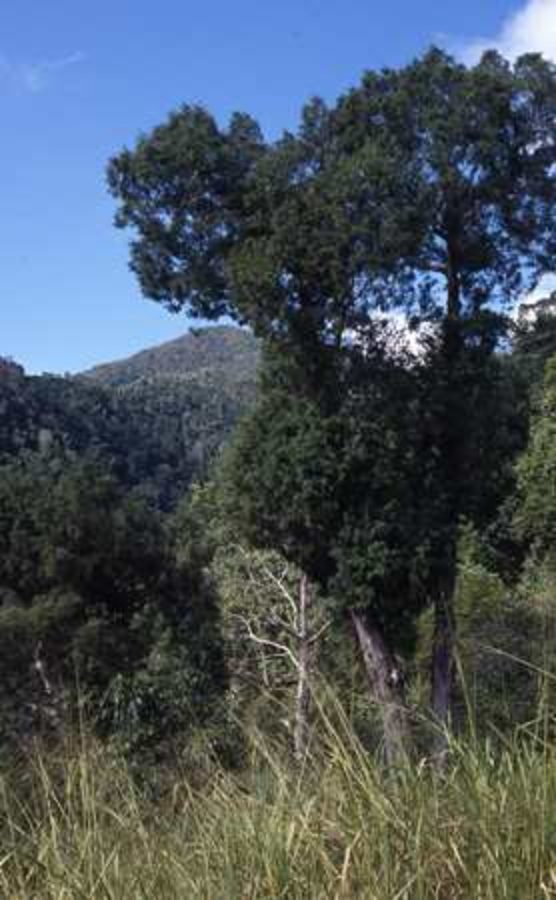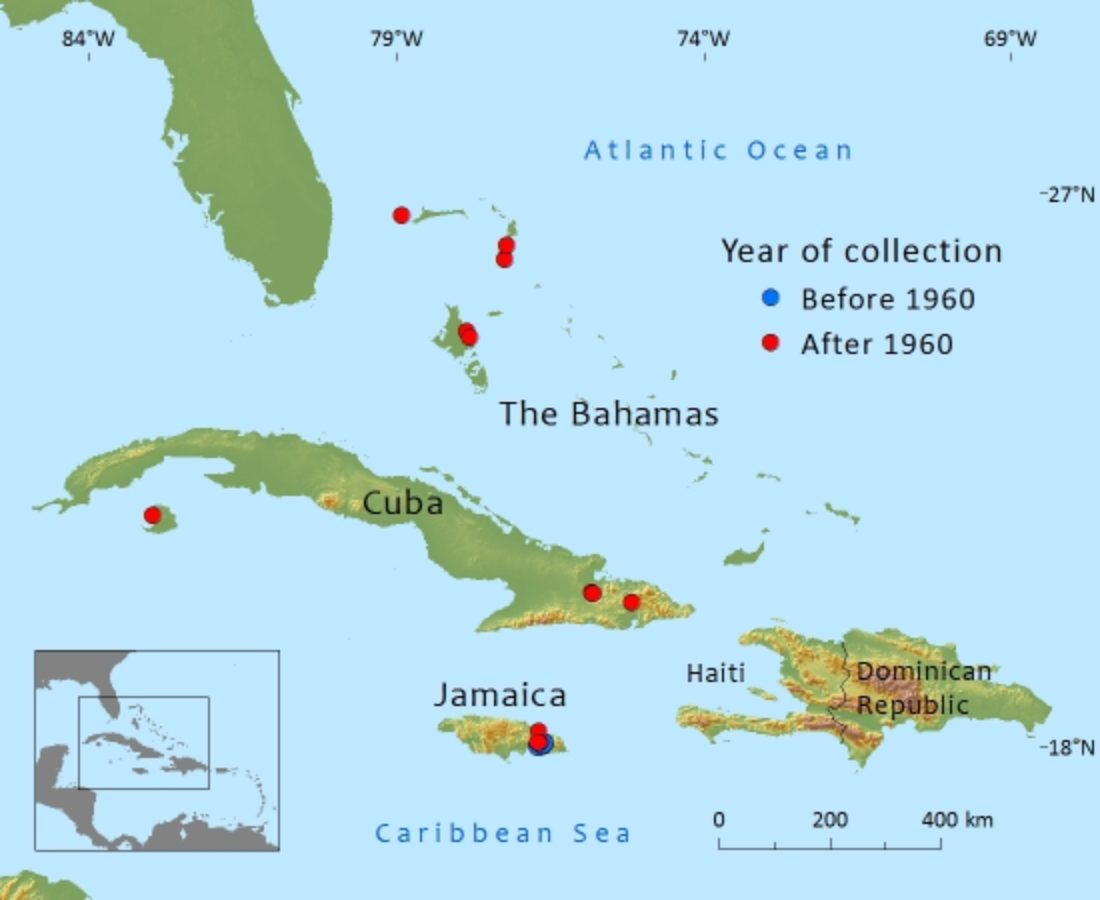Cupressaceae
Juniperus barbadensis var. lucayana
Endemic to the West Indes where it occurs in the Bahamas, Cuba and Jamaica. Here it is threatened by fire, cutting and invasive pathogens.
Human Uses
In Jamaica it is often used in furniture making due to its attractive wood and its excellent insect-repellant properties.
References and further reading
- Adams, R.P. (1983). The junipers (Juniperus; Cupressaceae) of Hispaniola. Moscosoa 2(1): 77-89.
- Adams, R.P. (1995). Revisionary study of Caribbean species of Juniperus (Cupressaceae). Phytologia 78(2): 134-150.
- Adams, R.P., Jarvis, C.E., Slane, V. & Zanoni, T.A. (1987). Typification of Juniperus barbadensis L. and J. bermudiana L. and rediscovery of J. babadensis from St Lucia, BWI (Cupressaceae). Taxon 36: 441-445.
- Areces-Mallea, A.E. (1997). A listing of threatened Cuban trees prepared for the Conservation and Sustainable Management of Trees project.
- Bellingham, P. (1997). Comments on tree species in the Blue Mountains.
- Berazaín I.L. R., Areces B. F., Lazcano L., J.C., & González T. L.R. (2005). Lista roja de la flora vascular cubana. Jardin Botanico Atlantico, Havana.
- Brito, A.A. (1995). Letter to Wendy Strahm including annotations to: List of threatened trees of Cuba. 1-5.
- Farjon, A., Page, C.N. and Schellevis, N. (1993). A preliminary world list of threatened conifer taxa. Biodiversity and Conservation 2: 304-326.
- Gardner, M., Campbell, K.C.St.E. & Freid, H. 2013. Juniperus barbadensis var. lucayana. In: IUCN 2013. IUCN Red List of Threatened Species. Version 2013.1. <www.iucnredlist.org>. Downloaded on 06 July 2013.
- Garraway, E. and Freeman, B. E. (1981). Population dynamics of the juniper bark beetle Phloeosinus neotropicus in Jamaica. Oikos 37(3): 363-368.
- Goodland, T.C.R. & J.R. Healey. (1996). The invasion of Jamaican montane rainforests by the Australian tree Pittosporum undulatum . University of Wales, Bangor.
- Hilton-Taylor, C. (2000). 2000 IUCN Red List of Threatened Species. IUCN, Gland, Switzerland and Cambridge, UK.
- Oldfield, S., Lusty, C. & MacKinven, A. (compilers). (1998). The World List of Threatened Trees. World Conservation Press, Cambridge, UK.
- Zanoni, T.A. (1999) Regional Action Plan: Caribbean Conifers: current status. In: Farjon, A. and Page, C.N. (Editors), Conifers. Status Survey and Conservation Action Plan. IUCN/SSC Conifer Specialist Group. IUCN, Gland, Switzerland and Cambridge, UK. ix + 121 pp.



